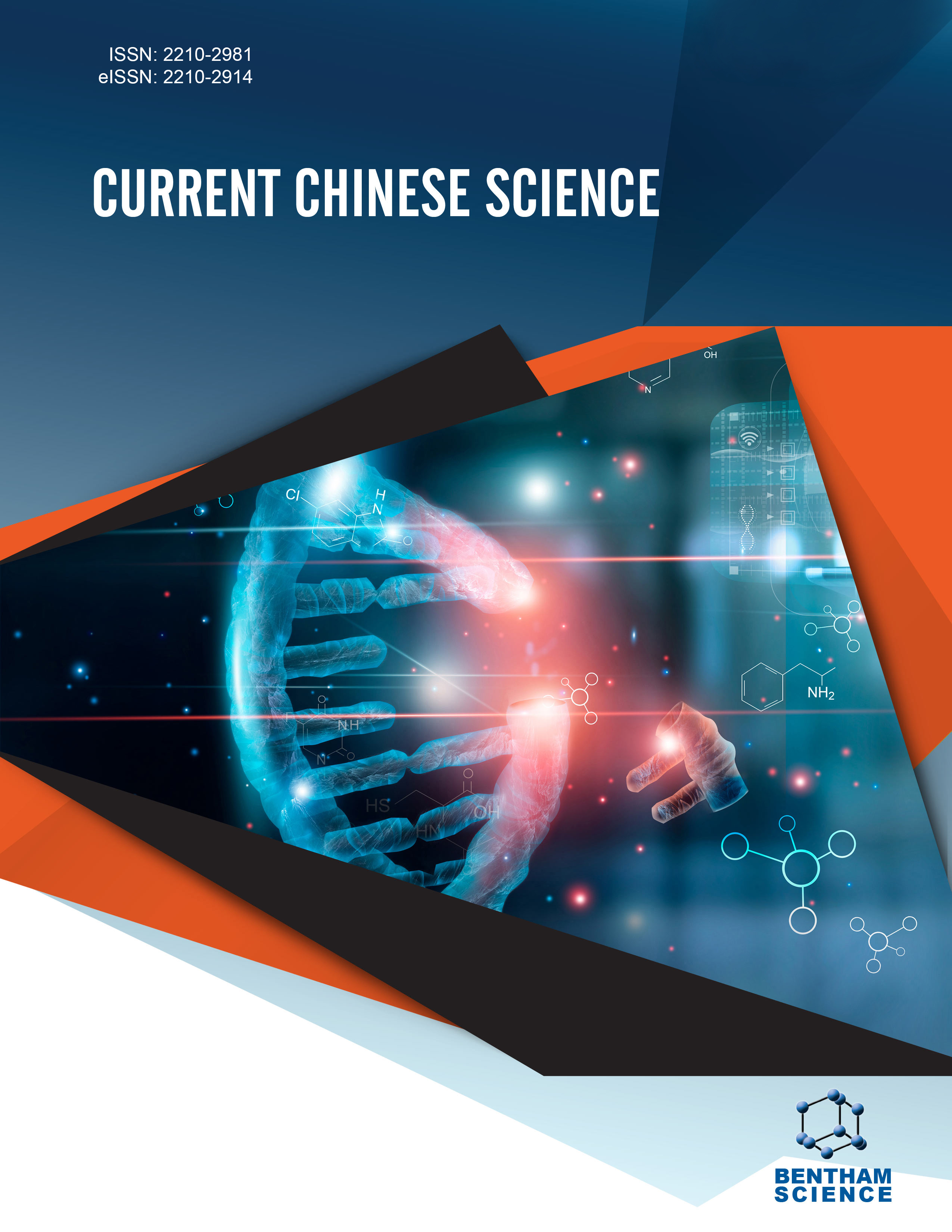- Home
- A-Z Publications
- Current Chinese Science
- Previous Issues
- Volume 1, Issue 2, 2021
Current Chinese Science - Volume 1, Issue 2, 2021
Volume 1, Issue 2, 2021
-
-
Review on Relative Navigation Methods of Space Vehicles
More LessAuthors: T.Y. Erkec and C. HajiyevThis paper is devoted to understanding relative navigation models that are used for space vehicles. The relative navigations models and approaches which are based on different systems (Inertial Navigation Systems (INS) Navigation Satellite System (GNSS) , Laser, Vision- Based, etc.) are compared. These models and approaches can be used individually or combined for solving relative navigation problems. Advantage Read More
-
-
-
Fluorescent Pyrazole Derivatives: An Attractive Scaffold for Biological Imaging Applications
More LessAuthors: Alexis Tigreros and Jaime PortillaAmong the huge number of fluorescent compounds described recently, pyrazole derivatives could play a paramount role in the design of probes for bioimaging applications–an important and simple tool for modern biology because of their easy synthetic methodologies, remarkable optical properties and chelating points. In this mini-review, we highlighted some pyrazole derivatives that have shown remarkable performance Read More
-
-
-
Computational Insight into the Binding Mechanism of Pyrazinoic Acid to RpsA Protein
More LessAuthors: Ashfaq U. Rehman, Saadat Ali, Humaira Rafiq, Salman Rasheed, Faisal Nouroz and Abdul WadoodBackground: Resistance to the critical first line anti-tubercular drug, Pyrazinamide, is a significant obstacle to achieving the global end to tuberculosis targets. Approximately 50% of multidrug- resistant tuberculosis and over 90% of extensively drug-resistant tuberculosis strains are also Pyrazinamide resistant. Pyrazinamide is a pro-drug that reduces the duration of tuberculosis therapy time by 9-12 months, while used as Read More
-
-
-
Selection of Sustainable Suppliers Using the Fuzzy MARCOS Method
More LessAuthors: Adis Puška, Željko Stević and Ilija StojanovićBackground: Selection of Sustainable Suppliers is a key term in sustainable supply chain management. This is the reason to choose the supplier who will support the company to implement sustainability in its business, especially in the supply chain. Objective: The aim of this paper is to establish a new innovative model for decision-making based on a fuzzy approach. Methods: This decision-making problem is solved by applying mul Read More
-
-
-
Cell Wall Components of Bacillus pumilus SE5 Improved the Growth, Digestive and Immunity of Grouper (Epinephelus coioides)
More LessAuthors: Hong-Ling Yang, Xi Hu, Ji-Dan Ye, Vijayaram Seerengaraj, Wei Yang, Chun-Xiang Ai and Yun-Zhang SunBackground: Probiotic cellular components could be an interesting alternative to live probiotics, which could potentially cause safety problems in open aquatic environments. Objective: The cell wall (CW), peptidoglycan (PG) and lipoteichoic (LTA) were extracted from probiotic strain of Bacillus pumilus SE5, and these biomolecules were used to develop the possible application in fish aquaculture. Methods: Grouper (Epinephelus c Read More
-
-
-
Photochromic Core-shell Nanoparticles
More LessThe results of spectral-kinetic studies in the field of nanophotochromism of the core128;’ shell type hybrid compounds are integrated. The properties of photochromic nanoparticles based on photochromic spirocompounds (spiropyrans and spirooxazines), chromenes, and diarylethenes and nanoparticles of noble metals (Ag and Au), diamonds, graphene and its oxide, silica, fullerenes, and quantum dots are considered. P Read More
-
-
-
Facile and Green Synthesis of Clean Porous Pd/2D-material Nanocomposites with Improved Catalytic Properties in 4-nitrophenol Reduction Reaction - The First Part
More LessAuthors: Kai Ke, Haiyang Liu, Xin Chen, Lingling Wang, Jiali Fang, Yulian Wu, Chuanzhen Wang, Chang Li and Xiaoxiang YangBackground: The development of environment-friendly and cost-effective palladium( Pd) based nanocomposite is of high interest for catalytic applications. Objective and Methods: In this paper, a porous Pd/two-dimensional-material (graphene oxide (GO) and reduced graphene oxide (rGO)) nanocomposite was synthesized with a green and facile method, without adding any additional reductant, surfactant and special solvent Read More
-
-
-
Sodium Alginate Modified Hydroxyapatite Nanotubes as a Novel Ecofriendly Additive for Preparation of Polyethersulfone Hybrid Ultrafiltration Membranes
More LessAuthors: Yongfeng Mu, Jun Liu, Han Feng and Guibin WangBackground: Hydrophilic nanomaterials have been extensively exploited their applications in the field of hybrid water treatment membranes. However, some of the modification process to nanomaterials may be complicated, and the nonselective pores caused by the poor compatibility between nanoparticles and the polymer matrix impair the rejection efficiency for ultrafiltration application. Thus, it is highly desirable to Read More
-
-
-
Sole Anti-inflammatory Immunomodulators: Innovative Drugs to Prevent and Treat Autoimmune Diseases and Proteopathies
More LessObjective: To review the available sole anti-inflammatory immunomodulators or adjuvants, different from pro-inflammatory ones, which elicit a Th2 immunity while inhibiting but without abrogating Th1/Th17 immunities. Adjuvants that are useful to develop vaccines for T-cell mediated autoimmune conditions. Methods: A literature search using PubMed and Google Scholar databases was made to identify reports regardi Read More
-
-
-
Recovery of a 91-year-old COVID-19 Patient with Medical and Psychological Support
More LessAuthors: Dong Zhang, Chunrong Liu and Li LiBackground: Coronavirus disease (COVID-19), caused by severe acute respiratory syndrome coronavirus 2 (SARS-CoV-2), is designated as a global pandemic. Elderly men with underlying medical conditions are more susceptible to SARS-CoV-2 infection and usually develop severe/ critical illness, therefore more attention we should be paid to them. Objective: Describe methods that may help old patients with COVID-19 recover. Me Read More
-
Most Read This Month
Article
content/journals/ccs
Journal
10
5
false
en


